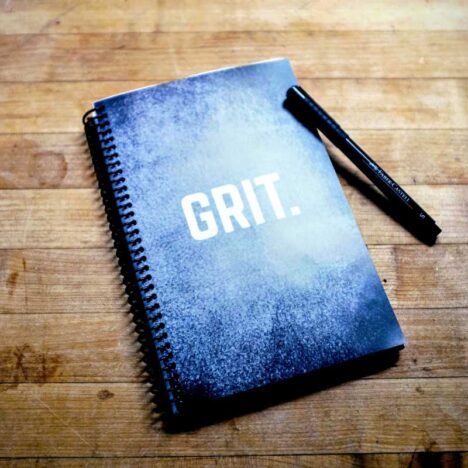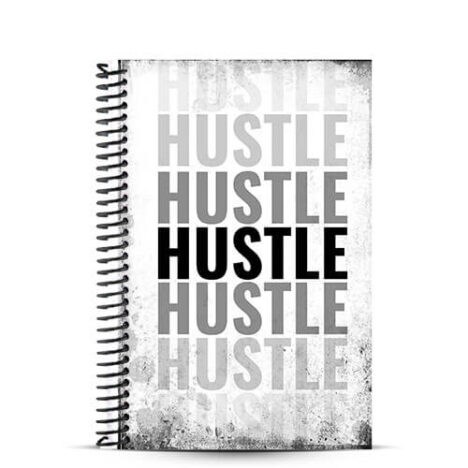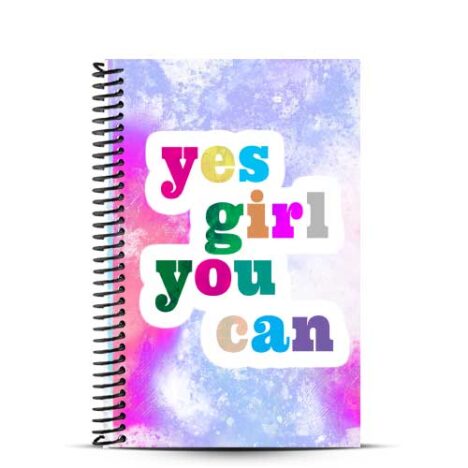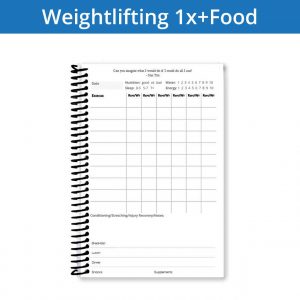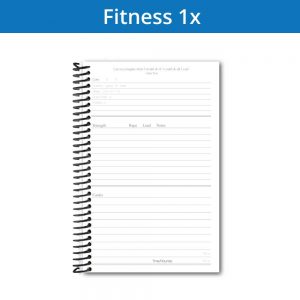you want Progress.
That’s what you’re aiming for when you use a workout journal, or any form of tracking. You collect data, so you can improve your progress.
At least, that’s what you should be doing.
When you use a journal, or a phone, or an excel sheet or a scrap of paper you found in the corner of the gym. Collecting data.
But if you really want to improve it’s important to be intentional about it.
Below is our GAP Method to intentionally record and get the most out of your workouts:
-
 Personal Training JournalsFrom: $17.99
Personal Training JournalsFrom: $17.99 -
 Ukraine Journal – Democracy MattersFrom: $17.99
Ukraine Journal – Democracy MattersFrom: $17.99 -
 Let’s Go!From: $17.99
Let’s Go!From: $17.99 -
 HustleFrom: $17.99
HustleFrom: $17.99 -
 Wake Up Kick Ass RepeatFrom: $17.99
Wake Up Kick Ass RepeatFrom: $17.99 -
 Yes Girl, You Can$17.99
Yes Girl, You Can$17.99
GAP = Goal – Action – Progress
- Set A Goal
- Record the Action
- Review Your Progress
The Perfect Workout Journal
You Can Pick Your Pages, Design Your Cover And Definitely Rock Your Workouts!
Let’s dive into our gap method
Step 1: Set your Goal
Even if you are just exercising to maintain your fitness, you have a goal, ‘maintain your fitness.’
Writing it down adds some mental willpower so that when your consistency starts to waver you can look back and see what you are striving for.
You can make that goal more effective by giving it a timeline and some methods for maintaining it. However, even just the act of having that goal will make you more likely to complete it.
If you really want to reinforce that goal, make it a point to write it down everyday.
For every workout, start out with the goal. This helps you set the trajectory of your workout, and give you something to measure when reviewing the session.
This goal can be super specific, like deadlifting 175lb 10 times with no rest. Or your goal can be much broader, for instance, having fun with your friends.
By setting your goal and writing it down, you focus your efforts and greatly increase your likelihood of success.
Step 2: Record your Action
Start by writing down the whole workout. This allows you to think about the movements, reps and sets before your body has to move an inch.
That mental preparation can be a huge advantage, especially when facing activities that often challenge you. Preparing for the weights and knowing where you are likely to have trouble is a sign you are learning your strengths and weaknesses and how to approach both.
Try to pencil in what you should be aiming for each set so you can work towards a concrete set.
If you are unsure about your strength, aim for the last set to be a max effort, where you complete as many reps as possible.
This allows you to truly push yourself and should give you a benchmark for where to start for the next workout.
As you complete a movement or set, record your numbers in the workout journal
With each finished set or movement, figure out a way to record your success or failure, weight, rep count, time to completion, or whatever measurement you are recording.
Its important to do this immediately because your short-term memory fades quickly when performing at max effort. Your brain is literally shutting off as you push yourself to the limit.
This is also the reason you want to pre-write your workouts in the workout journal so the mid-workout recording is as simple as possible.
Step 3: Review Your Progress
Keep Specific Notes About What Worked and Failed
One of the best parts of a workout journal is the ability to easily write what you want.
While we’ve added a specific notes section to almost all our predesigned workout pages, with pencil and paper, you can write wherever you want. So circle those PRs, if a shoulder is bothering you, highlight the set where it started and jot down any mobility issues you are dealing with.
Keep notes about your performance so you can diagnose your successes and failures. That knowledge of self allows you to set your next goals.
When you record your workouts, you give yourself access to your own fitness history. Your data.
And this allows you to use that information to figure out how to improve your success.
Using a workout journal is the simplest and most flexible way to keep track of the complex workouts that we encounter in our training.
Here are some ideas we’ve created for daily page layouts
We agree with James Clear in his description of a journal:
Simple – Being able to flip to a page and either find your old workout or record your new one cannot be overstated for its power. In less than 10 seconds you can be recording your exact workout, without flipping through screens, opening keyboards or trying to ignore notifications. We all know how hard it is.
Useful – Beyond its simplicity, a workout journal gives you the ability to easily retain and review your workouts within seconds. It can go anywhere with you, and there is never a battery issue to contend with.
Versatile – A workout journal gives you the ability to write a workout large or small. Add whatever annotations, thoughts, arrows or exclamations. It will record the notes and ideas that work for you.
THE MOST IMPORTANT PART OF A WORKOUT JOURNAL is you
A workout journal is truly about information; your information.
In creating ours we wanted to give you a head start with room for all the goals, workouts, benchmarks and personal records you can treat yourself to.
We created a workout journal to not only track your workouts but to track the components of your life that affect those workouts.
In deciding what to put on our pages, we tried to find universal metrics that profoundly affect performance; am I getting enough water? How did I sleep? Did I work on my goals and mobility?
These daily reminders and tables allow you to look back and add an extra layer of information to either recreate or build upon your success.
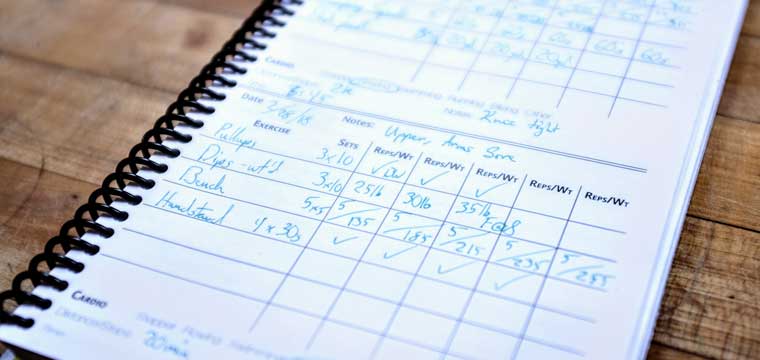
OTHER IMPORTANT ASPECTS OF A WORKOUT JOURNAL
Switching from Strength to Cardio (or Metcon)
During some workouts you will be performing a separate cardio/metcon (metabolic conditioning) workout.
We’ve created a space to keep those separate.
The same rules apply, write the workout down beforehand so you can easily record your progress as you complete it.
Tracking Your Metrics
Keeping track of your nutrition, sleep, mobility and goals is enormously important, because those parts of your life greatly affect your training progress.
By keeping track of them, you can also re-create the success of previous workout cycles, and predict future success if you get those components of your life dialed in.
If it is a PR or if you choose to keep track of all your lifts, put it in the PR index
Finally, it is important to record those personal records somewhere you can easily reference them.
For that reason we’ve included a PR section at the back of your workout journal to record your most important lifts and movements.
Now you have a place to check your previous scores before attempting that lift you haven’t seen for two months.
Review – the ‘Other’ Reason for Tracking Your Workouts in a Workout Journal
The really nice thing about your workout journal is the ease of reviewing and reflecting on previous workouts.
With the other metrics we’ve included, it becomes very easy to recreate previous successes and/or design your next workouts to progressively reach your goals.
Seriously though, we make sweet journals
You can Pick your Pages, Design Your Cover and definitely Rock Your Workouts!

